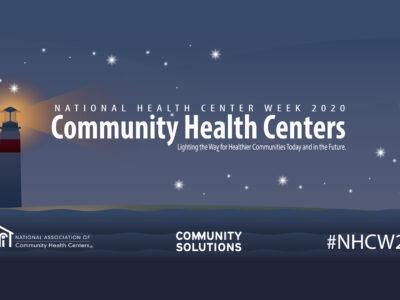In pretty much every community, people are working hard to help folks out of homelessness. But even as more and more people get housed, the overall numbers never seem to go down.
Why are we so good at helping people experiencing homelessness, but so bad at reducing homelessness overall?
Built for Zero is a national initiative of more than 90 cities and counties committed to ending homelessness. Built for Zero helps communities to streamline and fundamentally alter their homeless response systems to go from managing homelessness to ending it.
In order to do this, communities must solve four big problems:
1. Create accountability and a shared aim
Often, many different agencies work on the issue of homelessness. But these entities have different funders or regulatory requirements. They also don’t report to each other, which results in fragmented work.
The antidote is a shared aim: zero homelessness, with equally good outcomes for everyone, regardless of race. When we all agree to measure progress at the community level, instead of just in my program or yours, shared accountability becomes possible.
2. Establish a feedback loop
Nearly all Built for Zero communities are now measuring homelessness comprehensively and in real time, and it changes everything.
When you move from annual counts and patchy, cumbersome HMIS data to a real-time number you can be confident in, you can finally see whether all those programs are adding up to a result. And if they’re not, you have quality information that can help you decide what to do about it.
With better information on their systems, communities can adopt a nimble stance to solving homelessness as a dynamic issue.
3. Develop a rapid response discipline
Data can show you all kinds of problems — and then you can finally zoom in on the most important leverage points for getting to zero. Sometimes inflow data will show housing retention as the issue. Other times, a specific population may be routinely staying homeless longer than others.
Most often, better data reveals problems with the housing process itself. A number of years ago, we brought together seven different agencies to map out the steps one person had to go through to access housing support in their community.
It took them 3.5 hours to map things out, and the result looked like a game of chutes and ladders. It was no wonder people weren’t making it through to housing— there was no clear process.
When you can finally see that system, you can start to improve it. There are Built for Zero communities where they’ve now got this entire process down to a few weeks.
4. Use flexible resources strategically
Communities also need flexible housing and service dollars that we know work to end homelessness. This looks like adequate affordable, workforce and permanent supportive housing, and a commitment to supportive services using a Housing First approach.
But here’s the thing— without a shared aim, a reliable housing process, and regular data to help you monitor progress and course-correct, it’s basically impossible to implement those kinds of resources for a community-wide reduction in homelessness, anyway.
Let me be clear, we need major new affordable housing investments in America, but the country is littered with communities that have pushed through major expansions of these kinds of resources only to end up with just as much homelessness as when they started. We can’t just pump more money into a bad system and expect different results. Data can help us decide on investments that align existing resources with demonstrated needs. We can target housing or funding services towards the greatest possible impact in solving homelessness. We can both fix and fund effective housing systems in our communities.
The operating system to end homelessness
I like to think of these four steps as the operating system a community needs to end homelessness.
It starts with a shared aim, clear accountability, and a real-time data feedback loop. From there, you can start to solve the big problems, like streamlining a bureaucratic housing process, or better targeting limited results for impact.
Cities and townships with Built for Zero have demonstrated that homelessness can be driven to functional zero. There’s no silver bullet to ending homelessness. No single law, program or policy change will ever end homelessness or eliminate racial inequity in the housing system. The answer is to build a new way of working together, so we can see these problems in real time and methodically manage them down to zero.









